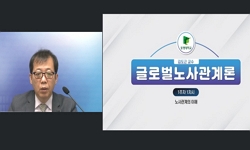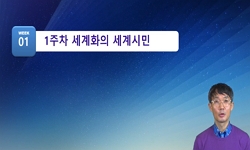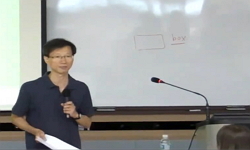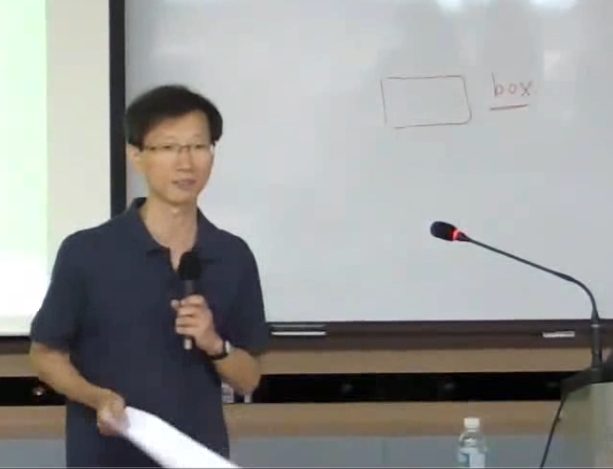This study purposes to explore the way in which global capital influenced the process of organizing workers in the Korean film industry, and to examine the workers` consciousness that the film workers adopted in the process of building their own union...
http://chineseinput.net/에서 pinyin(병음)방식으로 중국어를 변환할 수 있습니다.
변환된 중국어를 복사하여 사용하시면 됩니다.
- 中文 을 입력하시려면 zhongwen을 입력하시고 space를누르시면됩니다.
- 北京 을 입력하시려면 beijing을 입력하시고 space를 누르시면 됩니다.

영화인의 영화 노동자 되기 -영화산업노동조합 사례를 중심으로 = Why Do Film Artists Become Film Workers? -A Case of Korean Film Industry Workers Union
한글로보기https://www.riss.kr/link?id=A82450818
- 저자
- 발행기관
- 학술지명
- 권호사항
-
발행연도
2010
-
작성언어
-
- 주제어
-
KDC
300
-
등재정보
KCI등재
-
자료형태
학술저널
- 발행기관 URL
-
수록면
37-69(33쪽)
-
KCI 피인용횟수
14
- DOI식별코드
- 제공처
-
0
상세조회 -
0
다운로드
부가정보
다국어 초록 (Multilingual Abstract)
This study purposes to explore the way in which global capital influenced the process of organizing workers in the Korean film industry, and to examine the workers` consciousness that the film workers adopted in the process of building their own union. On the one hand, we specifically focus on the structural causes of organizing the union, such as the weakened government`s protection of the domestic film industry and the decreased number of film products caused by the economic crisis, which mainly affected the livelihood of film industry workers. On the other hand, we carefully analyze the workers` consciousness that the film industry workers have through the in-depth interviews. The Korean Film Workers Union is the outcome produced by the two different desires in the film industry: the producers` desire to have the rationalized production system reinforced by the global capital, and the workers` desire to have a standardized labor process which can assure them of secured paychecks. The workers came to realize that they had a right to demand a fair wage and working conditions through organizing their own union; however, the identities these workers had seemed a little confusing because they were still negotiating their identities between the film artists and film industry workers.
참고문헌 (Reference)
1 정이환, "한국영화산업 노동시장의 구조적 특성" 한국산업노동학회 11 (11): 89-118, 2005
2 고규대, "한국영화 위기 '꼴불견 감독'도 한몫"
3 김미현, "한국 영화산업 수익성 분석과 투자활성화 방안" 영화진흥위원회 2005
4 김도학, "영화현장 스태프의 근로조건 개선과 전문성 향상을 위한 연구: 근로기준법 · 노동법 적용 가능성의 검토" 2004
5 "영화산업노조 보도자료"
6 영화진흥위원회, "영화산업 전문인력 형성구조 분석 및 지원방향" 영화진흥위원회 2005
7 "영화산업 노동조합 조합원 교육자료"
8 박현정, "영화 산업 단체 협약의 의미와 향후 논의 과제" 4 : 2-9, 2007
9 김도학, "영상산업 프로젝트 조직의 경영성과에 대한 실증연구: 프로듀서의 역량을 중심으로" 동국대학교 대학원 2003
10 한국영화산업 노동조합, "빅파이-한국영화산업 나눠먹기"
1 정이환, "한국영화산업 노동시장의 구조적 특성" 한국산업노동학회 11 (11): 89-118, 2005
2 고규대, "한국영화 위기 '꼴불견 감독'도 한몫"
3 김미현, "한국 영화산업 수익성 분석과 투자활성화 방안" 영화진흥위원회 2005
4 김도학, "영화현장 스태프의 근로조건 개선과 전문성 향상을 위한 연구: 근로기준법 · 노동법 적용 가능성의 검토" 2004
5 "영화산업노조 보도자료"
6 영화진흥위원회, "영화산업 전문인력 형성구조 분석 및 지원방향" 영화진흥위원회 2005
7 "영화산업 노동조합 조합원 교육자료"
8 박현정, "영화 산업 단체 협약의 의미와 향후 논의 과제" 4 : 2-9, 2007
9 김도학, "영상산업 프로젝트 조직의 경영성과에 대한 실증연구: 프로듀서의 역량을 중심으로" 동국대학교 대학원 2003
10 한국영화산업 노동조합, "빅파이-한국영화산업 나눠먹기"
11 "민주노총 전국연맹 전국영화산업노동조합"
12 김동호, "미주 및 유럽의 영화정책에 관한 연구" 영화진흥위원회 2000
13 황준욱, "문화산업 전문 인력 형성 구조와 정책 지원" 한국노동연구원 2006
14 최인이, "노동조합운동전략으로서의 프레이밍과 정체성 구성: 단체교섭 전략에 대한 분석을 중심으로" 한국사회과학연구회 (70) : 273-313, 2007
15 김혜준, "국제공동제작연구" 영화진흥위원회 2001
16 조종흡, "‘스크린 쿼터’ 축소에 따른 한국영화산업의 영향과 대응방안" 동국대학교 대중문화연구소 민주노동당 천영세 의원실 2007
17 Christopherson, S., "The Effects of Flexible Specialization on Industrial Politics and the Labor Market: the Motions Picture Industry" 42 (42): 331-347, 1989
18 Faulkner, R., "Short-Term Projects and Emergent Careers: Evidence from Hollywood" 92 (92): 879-909, 1987
19 Ganz, Mashall, "Resources and Resourcefulness: Leadership, Strategy and Organization in the Unionization of California Agriculture(1951-1966)" 105 (105): 1003-1062, 2000
20 Turner, Christena, "Japanese Workers in Protest: An Ethnography of Consciousness and Experience" University of California Press 1995
21 Paul, A., "Flexible Production and the Transformation of Industrial Relations in the Motion Picture and Television Industry" 47 (47): 663-678, 1994
22 Fantasia, Rick, "Cultures of Solidarity" University of California Press 1988
23 Jeffri, Joan, "Between Extremities: The Artist Described" 19 (19): 1989
24 Menger, Pierre-Michel, "Artists as Workers: Theoretical and Methodological Challenges" 28 : 241-245, 2001
25 영화진흥위원회, "2009년도 판 한국영화연감" 영화진흥위원회 2009
26 "2007 단체협약"
27 노철환, "2004년 프랑스영화산업 결산" 영화진흥위원회 2005
동일학술지(권/호) 다른 논문
-
- 한국사회역사학회
- 김성진
- 2010
- KCI등재
-
- 한국사회역사학회
- 차남희 ( Cha
- 2010
- KCI등재
-
입법과정에 나타난 일-가족 양립 문제의 프레임(frame)에 관한 연구 -2000~2006년 국회회의록 분석을 중심으로
- 한국사회역사학회
- 김경희 ( Kyoung Hee Kim )
- 2010
- KCI등재
-
그람시적 대항 헤게모니의 현재적 의미와 그 가능성 -세계사회포럼의 탈자본 국제주의 운동을 중심으로
- 한국사회역사학회
- 성일권 ( Il Kwon Sung )
- 2010
- KCI등재
분석정보
인용정보 인용지수 설명보기
학술지 이력
| 연월일 | 이력구분 | 이력상세 | 등재구분 |
|---|---|---|---|
| 2028 | 평가예정 | 재인증평가 신청대상 (재인증) | |
| 2022-01-01 | 평가 | 등재학술지 유지 (재인증) |  |
| 2019-01-01 | 평가 | 등재학술지 유지 (계속평가) |  |
| 2016-01-01 | 평가 | 등재학술지 선정 (계속평가) |  |
| 2015-12-01 | 평가 | 등재후보로 하락 (기타) |  |
| 2011-01-01 | 평가 | 등재학술지 유지 (등재유지) |  |
| 2009-01-01 | 평가 | 등재학술지 유지 (등재유지) |  |
| 2006-01-01 | 평가 | 등재학술지 선정 (등재후보2차) |  |
| 2005-01-01 | 평가 | 등재후보 1차 PASS (등재후보1차) |  |
| 2004-01-01 | 평가 | 등재후보학술지 유지 (등재후보1차) |  |
| 2003-01-01 | 평가 | 등재후보학술지 선정 (신규평가) |  |
학술지 인용정보
| 기준연도 | WOS-KCI 통합IF(2년) | KCIF(2년) | KCIF(3년) |
|---|---|---|---|
| 2016 | 0.83 | 0.83 | 0.93 |
| KCIF(4년) | KCIF(5년) | 중심성지수(3년) | 즉시성지수 |
| 0.83 | 0.76 | 1.277 | 0.28 |





 KCI
KCI KISS
KISS






